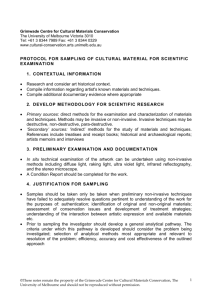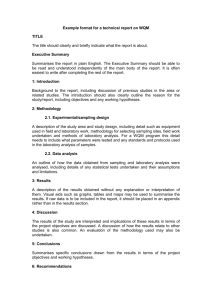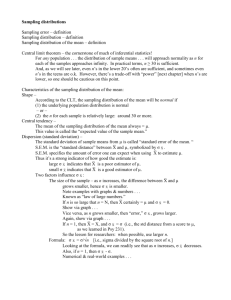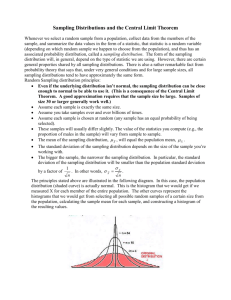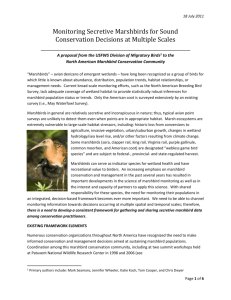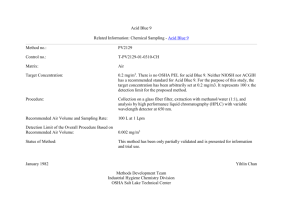protocol for sampling of artworks
advertisement
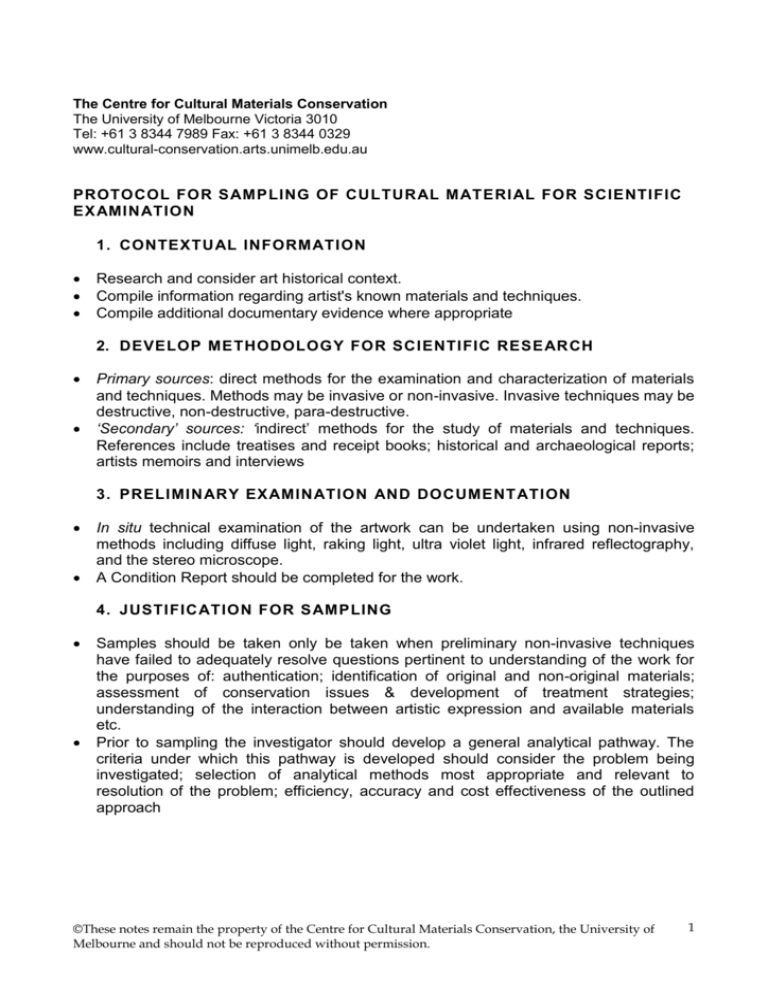
The Centre for Cultural Materials Conservation The University of Melbourne Victoria 3010 Tel: +61 3 8344 7989 Fax: +61 3 8344 0329 www.cultural-conservation.arts.unimelb.edu.au PROTOCOL FOR SAMPLING OF CULTURAL MATERI AL FOR SCIENTIFIC EX AMINATION 1. CONTEXTUAL INFORMATION Research and consider art historical context. Compile information regarding artist's known materials and techniques. Compile additional documentary evidence where appropriate 2. DEVELOP METHODOLOGY FOR SCIENTIFIC RESE ARCH Primary sources: direct methods for the examination and characterization of materials and techniques. Methods may be invasive or non-invasive. Invasive techniques may be destructive, non-destructive, para-destructive. ‘Secondary’ sources: ‘indirect’ methods for the study of materials and techniques. References include treatises and receipt books; historical and archaeological reports; artists memoirs and interviews 3. PRELIMINARY EXAMINATION AND DOCUMENTATION In situ technical examination of the artwork can be undertaken using non-invasive methods including diffuse light, raking light, ultra violet light, infrared reflectography, and the stereo microscope. A Condition Report should be completed for the work. 4. JUSTIFICATION FOR S AMPLING Samples should be taken only be taken when preliminary non-invasive techniques have failed to adequately resolve questions pertinent to understanding of the work for the purposes of: authentication; identification of original and non-original materials; assessment of conservation issues & development of treatment strategies; understanding of the interaction between artistic expression and available materials etc. Prior to sampling the investigator should develop a general analytical pathway. The criteria under which this pathway is developed should consider the problem being investigated; selection of analytical methods most appropriate and relevant to resolution of the problem; efficiency, accuracy and cost effectiveness of the outlined approach ©These notes remain the property of the Centre for Cultural Materials Conservation, the University of Melbourne and should not be reproduced without permission. 1 5. APPROVAL OF SAMPLING Submit condition report and justification for sampling to owner, custodian of collection or supervisor. Submit ‘request for sampling form’ to the above and seek approval. Ensure the client signs the document before sampling is undertaken. Fill out the sampling check list for conservators. 6. S AMPLING METHODS If sampling is necessary the investigator should determine how to maximize information from the minimum amount of sample material Samples should be removed from an unobtrusive location and should be representative of the material/stratigraphy being investigated. Areas of non-original material should be avoided, unless specifically required. Samples are normally taken with an opthamological scalpel from edges, losses, tears or cracks. All sampling should be fully documented graphically and/or photographically and the appropriate proformas completed. At CCMC fill out the sample registration form. All required materials an equipment should be prepared and assembled prior to sampling. Contamination of the sample should be minimized: use clean blades etc. and have a clean glass phial (or other suitable container) ready to receive the sample clearly labeled with identification details (sample type, id number, artist, object, owner, date) Further preparation of the sample will be determined by the analytical technique selected. Sample preparation: does this need to be undertaken in a specialist laboratory? will the sample be destroyed/altered during analysis? can tests be repeated? can samples be used for more than one method? ©These notes remain the property of the Centre for Cultural Materials Conservation, the University of Melbourne and should not be reproduced without permission. 2
